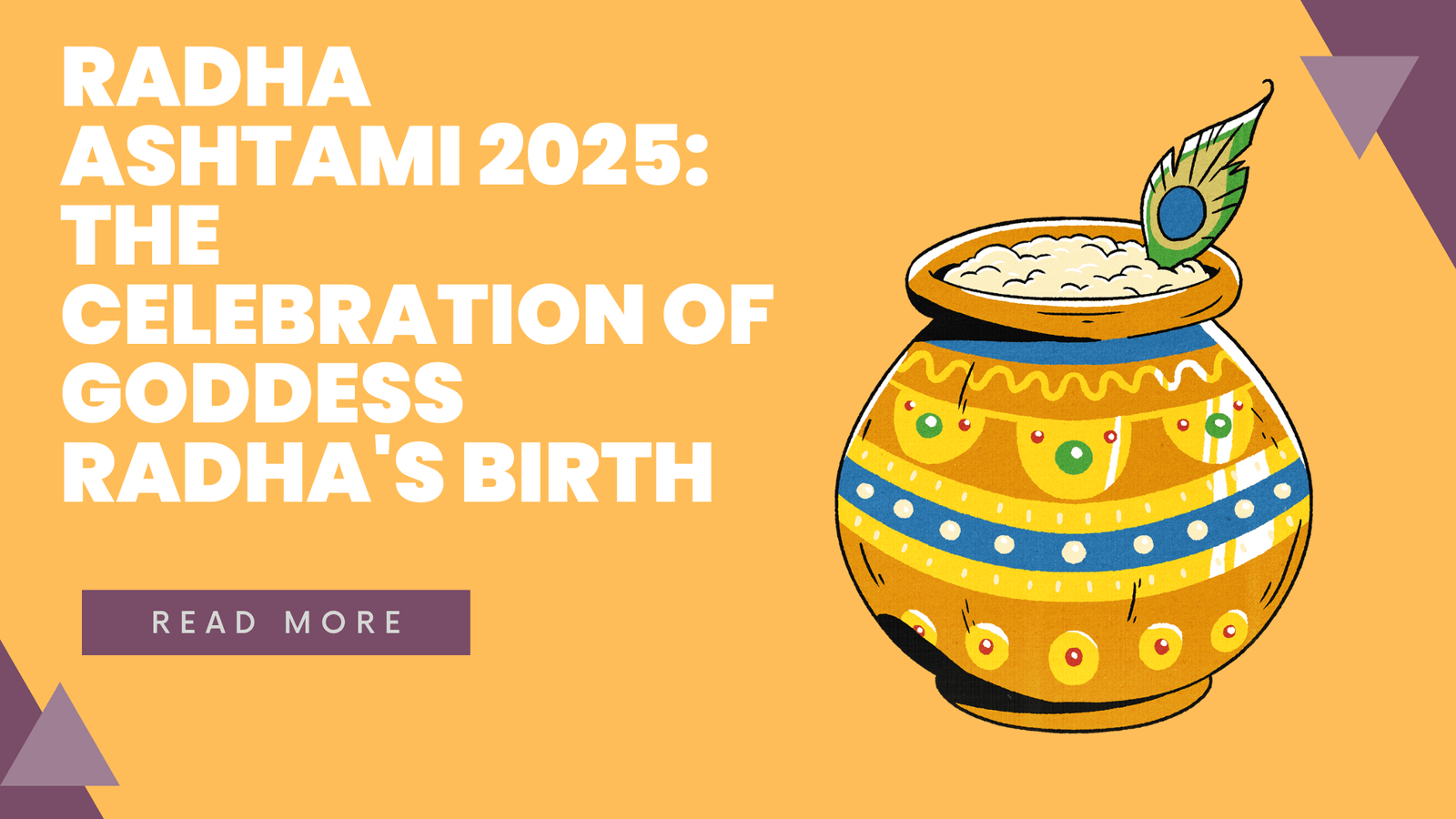Radha Ashtami 2025: The Celebration of Goddess Radha’s Birth
Radha Ashtami is one of the most important and revered festivals in Hinduism, celebrated with great enthusiasm and devotion by millions of devotees. This day marks the birth of Radha, the beloved consort of Lord Krishna, who holds a special place in Hindu mythology for her devotion, beauty, and eternal love for Krishna.
When is Radha Ashtami in 2025?
In 2025, Radha Ashtami will be celebrated on Tuesday, September 16, 2025. This festival falls on the Ashtami (eighth day) of the Shukla Paksha (waxing phase of the moon) in the month of Bhadrapada according to the Hindu lunar calendar. It is celebrated during the same period as the celebrations for Krishna Janmashtami, though Radha Ashtami is typically celebrated a few days later, marking the occasion of Radha’s birth.
The Significance of Radha Ashtami
Radha Ashtami is a day dedicated to the worship of Radha, who is considered the embodiment of divine love and devotion. Radha is often regarded as the supreme goddess in Vaishnavism, and her love for Lord Krishna represents the deepest form of devotion, surrender, and spiritual longing. She is said to be the eternal energy that sustains the creation of the universe and the embodiment of the Shakti (divine energy) that makes Lord Krishna’s powers complete.
According to Hindu tradition, Radha was born in the village of Barsana in Uttar Pradesh, India, and it is believed that she was the divine consort of Lord Krishna in his childhood. Radha’s love for Krishna is not just romantic but symbolic of the soul’s longing for the divine and the ultimate union with God.
The Legend of Radha
Radha’s divine love story with Lord Krishna is central to many religious texts, including the Bhagavata Purana, which beautifully describes their divine connection. Although Radha and Krishna are often depicted as the perfect couple, it is believed that Radha was born to demonstrate the highest form of devotion to the Lord, which is why she is known as Radharani—the “Queen of Radha.”
Her story transcends earthly relationships and exemplifies the pure and selfless love one should have for the divine. The eternal bond between Krishna and Radha represents the union of the soul with the supreme consciousness.
Rituals and Celebrations of Radha Ashtami
Radha Ashtami is celebrated with much devotion and reverence, especially in places associated with Lord Krishna such as Vrindavan, Mathura, and Barsana. Here’s how Radha Ashtami is typically celebrated:
- Early Morning Worship: Devotees begin the day by taking an early bath and offering prayers to Radha and Krishna. Temples dedicated to Radha and Krishna hold special prayers and aartis (devotional songs) to honor the birth of Radha.
- Fasting: Many devotees observe a fast on Radha Ashtami to seek blessings for spiritual growth and purity. Some devotees may only consume fruits, milk, and other satvik (pure) foods during the day, while others may refrain from eating altogether.
- Decorating Temples and Homes: Temples dedicated to Radha and Krishna are decorated with flowers, lights, and rangolis (traditional designs made from colored powders). Homes of devotees are also adorned with fresh flowers and lights, and many people set up idols or pictures of Radha and Krishna for the worship.
- Radha Ashtami Puja: A special puja (ritual) is performed to worship Radha, offering flowers, fruits, incense, and sweets to honor her. The prayers usually focus on seeking Radha’s blessings for peace, prosperity, and devotion. In some temples, devotees perform a special Radha Ashtami kirtan (chanting of devotional songs) and Bhajan (devotional music).
- Anointing of Idols: The idols of Radha and Krishna are bathed and decorated with colorful clothes and jewelry. Some temples perform an Abhishek (ritual bathing) of Radha and Krishna’s idols, symbolizing purification and reverence.
- Devotional Singing and Dance: In places like Vrindavan and Barsana, Radha Ashtami is marked by vibrant celebrations, including kirtans and bhajans. Devotees sing praises of Radha and Krishna’s divine love, and some also participate in Raaslila (divine dance), re-enacting the joyful and loving moments of Radha and Krishna’s relationship.
- Community Feasts: After the worship and rituals, many temples and communities hold large gatherings and serve prasadam (holy food) to the devotees. The food is often distributed in the form of a community feast, symbolizing the abundance and blessings of Radha and Krishna.
Special Celebrations in Barsana and Vrindavan
In Barsana, the birthplace of Radha, and Vrindavan, where she spent much of her life with Lord Krishna, Radha Ashtami is celebrated with much fanfare. The Radha Ashtami festivities here include processions, devotional music, and Raas Leela performances, which showcase the divine love of Radha and Krishna through dance and drama.
In Barsana, there is a special tradition of worshipping Radha’s mountain (Radha’s Hill), where Radha is said to have performed many divine acts with Krishna. Devotees gather in large numbers to participate in this sacred event.
Conclusion
Radha Ashtami is a beautiful occasion to celebrate the divine love and devotion that Radha embodies. It is a time to reflect on the pure love between Radha and Krishna and seek blessings for inner peace and spiritual growth. As Radha’s birth is celebrated on September 16, 2025, devotees around the world will unite in worship, prayer, and joyful celebrations, making it a significant day for millions of people.
So, get ready to celebrate this divine festival and immerse yourself in the love and devotion of Radha Rani!






